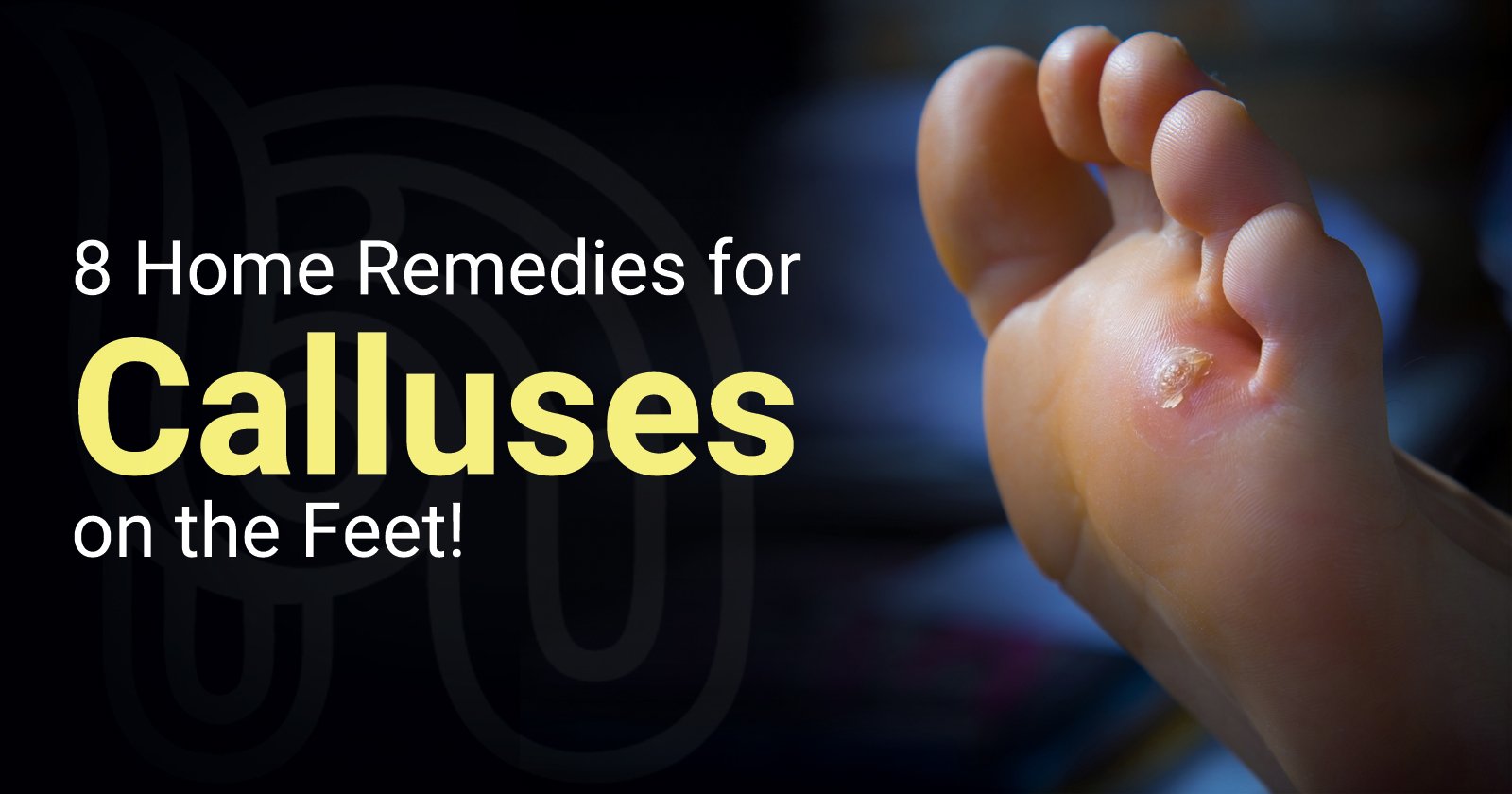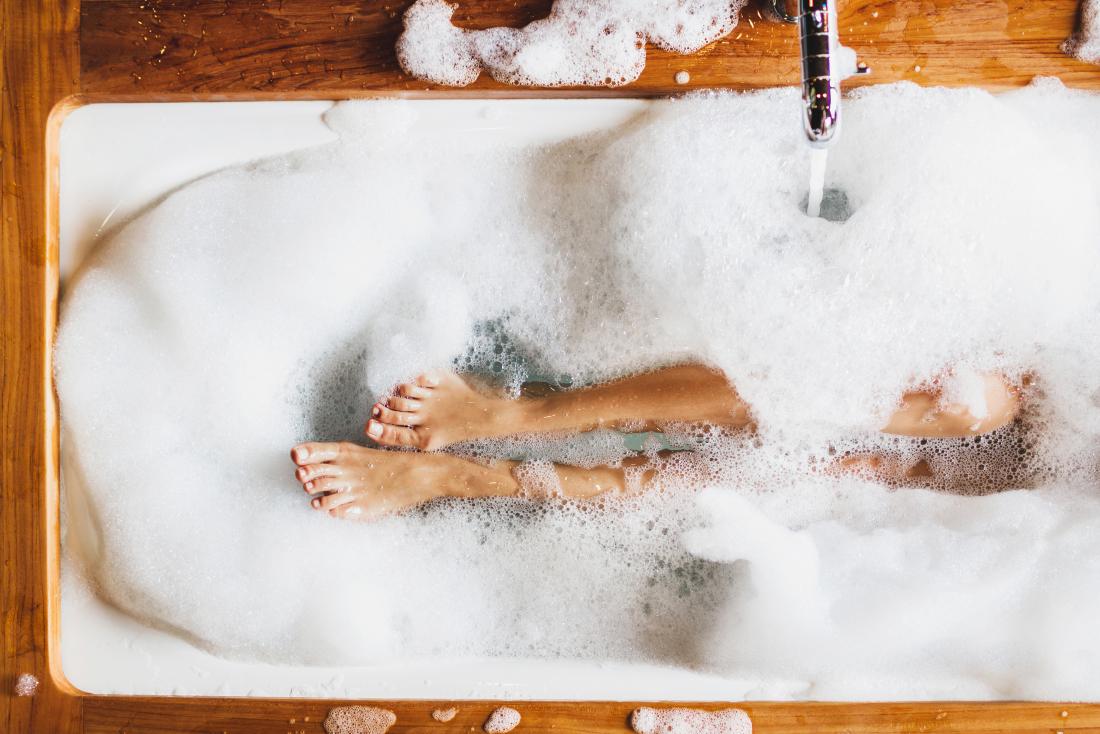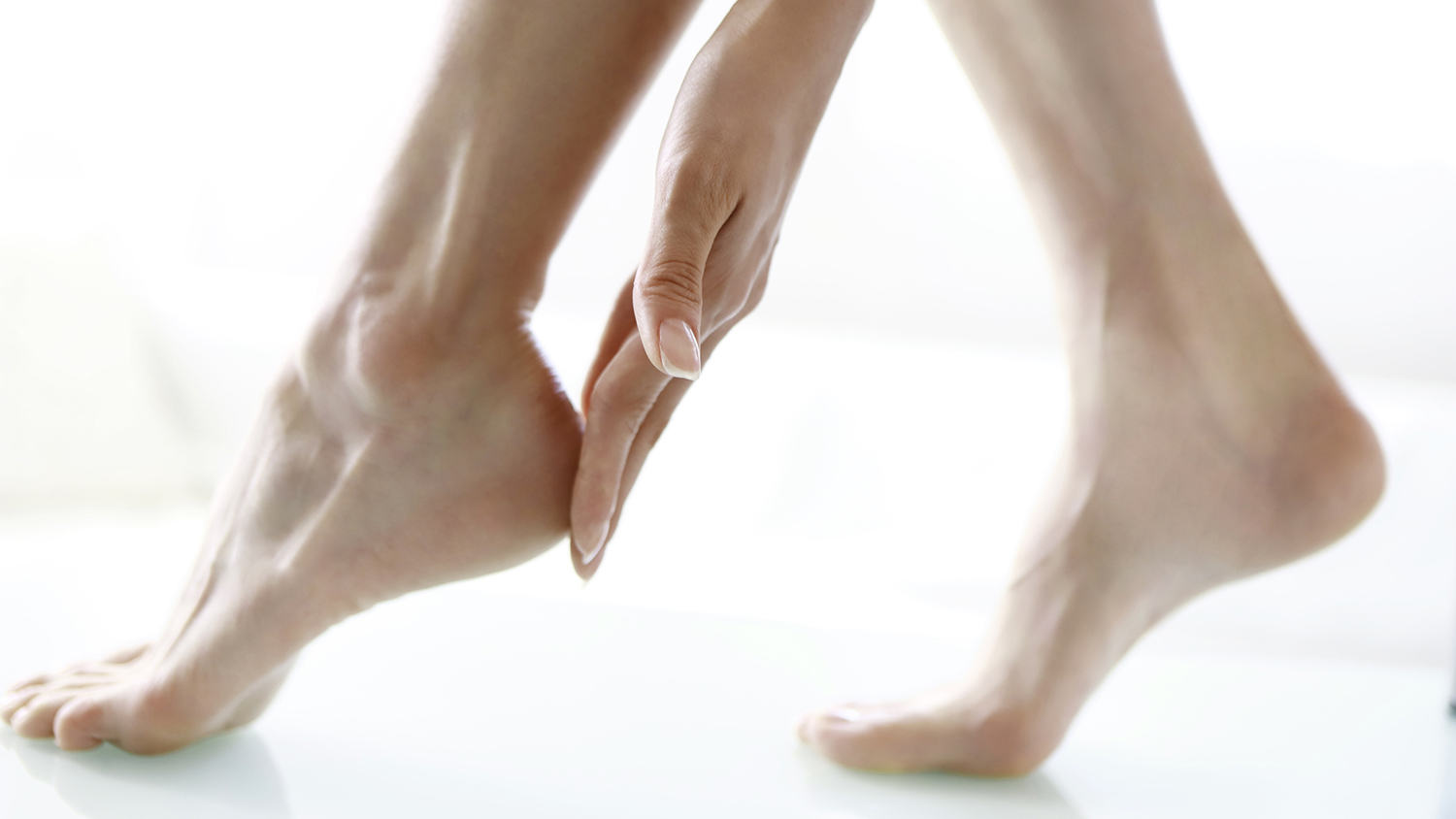A. Home remedies for calluses
We include products that we think will be useful for our readers. If you buy through links on this page, we can earn a small commission. Here is our process.
Calluses are hard, thick skin spots that are often uncomfortable. They are rarely severe, and a number of simple home remedies can help reduce their appearance.
Excessive pressure or friction can cause calluses to form on almost every area of the skin. Common areas for calluses are the feet, fingertips, and palms.
A person can usually get rid of unwanted calluses at home. Although it takes time and patience, regular exfoliation and hydration can help.
Do not use sharp objects to remove or reduce a callus. This can hurt the skin and lead to bleeding and even infections.
In this article, we discuss seven home remedies for calluses. We also give some tips on how to prevent them and describe when to consult a doctor.
1. Epsom salt
Epsom salts can help soften calluses in preparation for other treatments, such as manual exfoliation with a pumice stone or a foot lime.
Try adding a handful of Epsom salt to a bath or bowl of warm water and soak the affected skin in it for 10 minutes.
2. Pumice stones
Pumice stones are light and porous stones that many people use to exfoliate dead skin and calluses.
These stones work best after a person has softened their skin. An easy way to do this is to dip the chalky area in hot water for 5-10 minutes before using the stone. Adding Epsom salt to the water can improve the results.
Once softened, remove dead skin cells with gentle circular movements or side by side with the pumice stone. It may be necessary to exfoliate for several days in a row to achieve the desired results.
3. Foot files
A foot file is another tool used for exfoliation. A file usually has a metal grid and a rubber or plastic handle.
Like pumice stones, it is best to soften the callused skin in warm water before using a file. Many people use foot files in the bath or shower.
After filling the corns, the use of a moisturizer can help keep the skin soft.
4. Exfoliating creams
Instead of exfoliating the skin manually, it is possible to remove dead skin cells with exfoliating creams or lotions.
Products that work for calluses usually contain ingredients such as salicylic acid, urea, or ammonium lactate.
It may be necessary to apply these products daily to help remove dead skin cells. Over time, the skin will soften and the calluses will become less noticeable.
Many exfoliating creams marketed as callus treatments are available in drug stores and online.
However, it is important to check labels first, as these products may contain hard ingredients that can have a burning effect on the skin. A doctor, pharmacist or podiatrist may recommend a suitable cream or lotion.
5. Baking soda paste
A baking soda paste is an alternative to commercial exfoliating creams.
To do this, mix 2 tablespoons of water with enough baking soda to make a paste, then add a few drops of lime juice.
Apply the paste to the chalky areas and cover with socks, gloves or a gauze pad. Repeat this application every night until the callus is gone.
6. Skin conditioner creams
Try to apply strongly moisturizing creams or vaseline on the chalky areas and leave them on top during the night. This can help soften the calluses and prevent the skin from drying out.
Wearing gloves or cotton socks after cream application can also help protect the area and lock in moisture while you sleep.
7. Protective pads
Reducing the friction or pressure responsible for the calluses can help the area heal naturally.
Calluses are a type of padded bandage that can protect or prevent calluses. They come in different sizes and shapes, and many of them are designed specifically for the feet.
If calluses are on the hands, wearing protective gloves or padded gloves can also help protect the calluses and allow them to heal over time.
8. Prevention
The calluses are caused by excessive pressure or friction on the skin. Eliminating the underlying cause can help reduce the likelihood of calluses repeating.
a. Ways to prevent calluses include
- Wash your feet daily with soap and water, then dry them well and apply a moisturizing cream to them
- Wear shoes that fit well, because shoes that are too tight or too high can increase friction.
- Using gel cushions or foam inserts in shoes to avoid excessive pressure on the skin
- Wear protective gloves when doing activities that can lead to calluses, such as gardening, handling tools, lifting heavy objects, or riding a bike
Avoid shoes with a tight toe box or those that rub uncomfortably against the feet.
The calluses are caused by excessive friction or pressure on certain areas of the skin. They can be uncomfortable and uncomfortable, but rarely cause concern.
A number of simple home remedies can help eliminate calluses, including treatments that soften or exfoliate the skin. Preventive measures, such as wearing comfortable footwear and protective gloves, can help reduce the likelihood of calluses developing.
People with diabetes should avoid treating their own calluses. Anyone with severe or persistent calluses should consult a doctor or podiatrist.
B. The DIY Callus Remover That Rivals a Professional Pedicure
Besides well cared cuticles and perfectly polished nails, we love the magical sensation of soft baby soles after a pedicure in the salon. But when life gets hectic and the pedicure of the salon goes down in the to-do list, a pampering session at home becomes even more necessary. Between filing, moisturizing and painting, we love to do a natural callus removal to get rid of dry and cracked heels. The best part? We found a way to do it ourselves with common ingredients that you probably already have in your kitchen.
1. What you need
- Apple cider vinegar
- A slice of bread
- Plastic wrapping or an elastic bandage
2. What you need to do
Soak the piece of bread in apple cider vinegar for a few hours until it forms a paste. Then place the bread on its calluses, fasten it with an elastic bandage or a wrapper and leave it on overnight. In the morning, rinse it.
3. The benefits
Apple cider vinegar is praised for its antifungal and antibacterial properties and is often used as a natural household cleaning product. And for the feet, the benefits are no different. While sleeping, vinegar acid works to soften the skin of your feet which has hardened due to wearing tight shoes, walking on certain surfaces, or even underlying health problems.
For stubborn calluses, try a pre-bath before immersing yourself in the DIY callus remover. A simple 30-minute baking soda sauce will remove the top layer of dead skin and make the apple cider vinegar blend even more effective.
4. The best products for calluses
- Not the “do it yourself” kind? We have put together a series of warehouse purchase solutions for flat feet.
- Aveeno Repairing Cica Moisturizer Mask for feet $3.
- These foot slippers are a dream of dry feet – shea butter relieves dryness while prebiotic oats nourish.
- Bliss Aloe Leaf & Peppermint Foot Cream $10.
- The refreshing peppermint and soothing aloe vera transform dry and sore feet into silky smooth waking soles.
- Barefoot Professional Scientist Micro-Rubbed XL Rasp $12.
- This stainless steel foot scraper features 200 micro safety scraps for safe and efficient callus removal.
- Caudalie $15 foot beauty cream
Enriched with shea butter, this foot cream has a soft consistency, making it the perfect solution for cracked high heels.
C. How to Get Rid of Calluses
The calluses are caused by repeated pressure on an area of your skin. The extra layers of skin grow over the affected area until a harder and higher cock forms. Your body does this to protect your skin from being exposed to irritants or breakage. The calluses usually do not hurt and occur most often on the heels, palms, toes, and knees. Wearing tight shoes, walking barefoot, playing instruments, and working with your hands are common causes of calluses.
Calluses do not indicate a medical problem and are not a reason to seek emergency care. If you want to get rid of your calluses because you don’t like their appearance, there are some natural remedies you can try at home.
1. Treatments and remedies for calluses
a. Hot water
Before trying anything else, treat the calloused area with a 20-minute bath in hot water. After drying the skin with a towel, try rubbing a layer of callus gently with your finger. Over several immersion sessions, you may be able to completely remove the callus layer by layer. A simple hot water sauce is the first remedy recommended by the American Academy of Dermatology.
b. Unmedicated callus cushions
The calluses, which are made of felt, silicone and a soft adhesive, can be applied to the affected area and worn under socks, shoes, gloves or shirts. These cushions prevent your calluses from becoming irritated while healing. The Mayo Clinic advises you to avoid calluses containing salicylic acid – an ingredient that can irritate and break your skin.
c. Apple Cider Vinegar
The acidity of apple cider vinegar can soften the hard skin of a callus. Mix a solution of four parts water and one part apple cider vinegar and dip its callus for about 20 minutes. Removing the skin after this soaking can help you peel one or two layers of callus. Do not pull too hard, and try to be patient. Tearing the skin around or over the callus can lead to an infection.
d. Castor oil
Castor oil has properties that make it a natural lubricant for the skin. This can be useful when trying to condition the skin to rub a callus. Soaking the calluses in a mixture of warm water and 5 tablespoons of castor oil should be enough to lubricate the hard skin and calm the affected area.
e. Pumice stone
A pumice stone can be especially useful if it has calluses on the bottom of the feet or on the elbows, where they can be difficult to see. After dipping your callus completely, apply pressure from the pumice stone to your callus and rub it in a circular motion. Do not try to remove all your calluses at once. The idea is to rub the skin along some applications of this remedy.
f. Epsom salt
Epsom salt is considered as an exfoliating agent. This treatment is especially useful if you want to relax after working with your hands and get rid of a callus at the same time. The fine grains of salt dissolve to relax the muscles and soften the skin. If you mix 2 to 3 tablespoons in a bowl of hot water before dipping the callus, it can come out more easily.
g. Sandpaper
The use of fine sandpaper very gently can also help to get rid of calluses. Combine this with one of the others on this list to get the best results. It is best to soak the callus first before trying sandpaper.
Gently apply pressure to the callus and see if you can rub a layer of the callus or if it detaches completely. If the callus does not come loose, repeat the immersion or try another time. Never rub your skin vigorously with sandpaper.
h. Tea Tree Oil
Tea tree oil is a natural antibacterial, antifungal and antiseptic. Add a few drops of tea tree oil to a bowl of warm water and soak until you feel the callus begin to soften and rise. Do not leave this sauce for more than 15 minutes as the tea tree oil is very strong and can damage your skin layer if exposed to it for too long.
i. Sodium bicarbonate and lemon juice.
This remedy combines an acid component (lemon juice) with a chemical component (baking soda, also known as sodium bicarbonate) to trigger a reaction that helps remove calluses. To start, you need hot water, a bowl and 2 to 3 tablespoons of lemon juice. After soaking your calluses in this solution for a few minutes, add the baking soda. The fine granules of baking soda and the gasified effect of its addition to the lemon juice can give this sauce an additional effect of dissolving the callus.
2. When to consult your doctor
Calluses are not normally a cause for concern. Never try to cut them from the skin with a razor blade or sharp object. This can injure the skin and cause the area to become infected, especially if it is still compressed or irritated by the original callus cause. If the callus starts to drip, become discolored, or bleed profusely, you should consult a doctor. Your doctor can refer you to a podiatrist, monitor the infection, or lance or cauterize the infected area.
If you have a medical condition that affects your circulation and develops calluses in your feet, you need to take extra care to treat them gently. Finding the underlying cause of your calluses is important to avoid foot problems, which are sometimes associated with diabetes and cardiovascular health problems.
3. Summary
Once you have taken care of your calluses, you can take measures to prevent them from happening again. Wearing work gloves or knee pads may prevent you from developing calluses while working with your hands or knees. Keeping your hands hydrated regularly will keep your skin soft and less prone to cracking and irritation.
Avoid walking barefoot, and make sure your shoes fit well and give your skin enough room to breathe. Cut your toenails straight and keep them short to avoid foot irritation. Wearing socks and padded slippers around the house is another way to keep the bottom of your feet flat and free of calluses.











